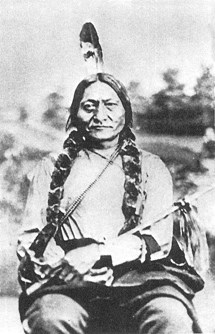On June 25, 1876 Lakota Sioux Chief Sitting Bull and his warriors defeated General George Custer and the 7th Cavalry at the battle of the Little Big Horn in Montana. In the aftermath the Chief and his band roamed the Montana territory hunting buffalo and avoiding any military contact or pressure to move onto reservations. The Lakota had entered into a treaty in 1868 to reside on lands in South Dakota, but circumstances changed when gold was discovered in the Black Hills and there was serious encroachment on these lands by outsiders digging for gold. Living in constant uncertainty, and fear of attack in 1877, Sitting Bull and 5,000 Sioux entered Canada encamping in the Cypress Hills and Wood Mountain area. The Chief claimed that the American and Canadian sides of the boundary were traditional hunting lands of the Sioux. It must be remembered that “boundaries” — the concept of the 49th parallel for example was a foreign concept to the aboriginals. Having a history of thousands of years of living on North American soil, they could oppose being considered immigrants. It fell to the North West Mounted Police to deal with the problems of feeding and supervising the 5,000 newly arrived. Looking back, one can see the overwhelming task for the Mounties. It would be overwhelming in this day and age to organize assistance for a population the size of a city spread out over about a 150 mile area. — Next week, the story of the North West Mounted Police’s efforts to provide assistance to the Sioux and their eventual return to American territory.
Contact Terri Lefebvre Prince,
Heritage Researcher,
City of Yorkton Archives,
Box 400, 37 Third Avenue North
Yorkton, Sask. S3N 2W3
306-786-1722
heritage@yorkton.ca



